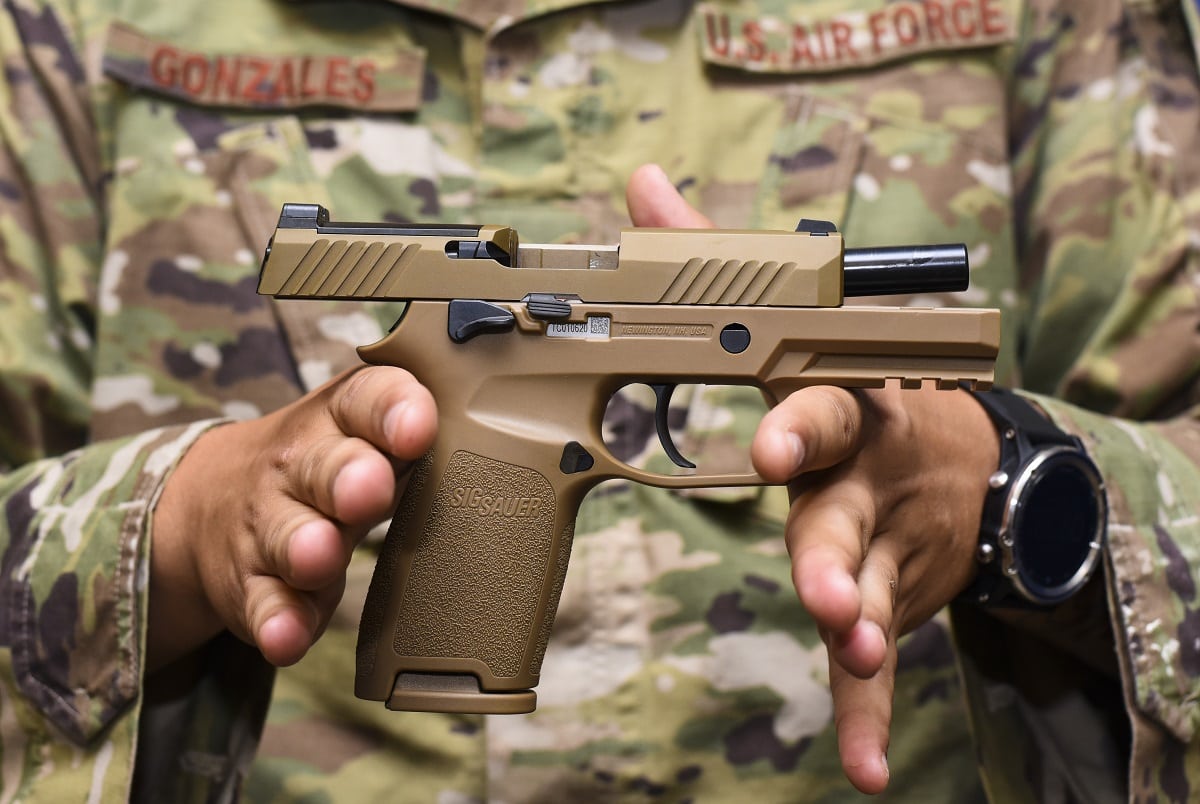After years of testing, development, and collaborative work with the Air Force, the Army chose SIG SAUER’s large M17 and combat M18 (also known as the X-17 and X-18) to be its Army Modular Handgun System.
The MHS program, in development for many years, was an extensive effort to develop a future replacement for the Army’s M9 Beretta and SIG Sauer M11.
The new weapons were identified as “modular” by design, meaning they were built to be adjusted and upgraded as needed over time. For example, the guns were configured to receive suppressors as adaptations moving into future development.
Although heralded as an optimal path forward for the future of Army soldier weapons, the M17 did go through several Engineering Change Proposals to correct a few developmental problems the weapons encountered.
In a drop testing of the weapon, during which an empty prime cartridge was inserted, the “striker struck the primer causing a discharge,” a 2018 essay from the Office of the Director, Operational Test and Evaluation. explained. Subsequently, during further weapons testing, both the M17 and M18 experienced “double ejections where an unspent ball round was ejected along with a spent round.
M17 and M18 Developmental Challenges
“Both the XM17 and XM18 pistols experienced double-ejections where an unspent ball round was ejected along with a spent round. Due to the increased frequency of occurrence during Product Verification Test (PVT), the Army stood up a root cause analysis team to identify the cause of the double ejections in parallel with continued PVT,” the paper explains.
Ultimately, as many as 500,000 M17s could be built for military use, depending upon the extent to which the Navy, Air Force, Marines, and U.S. Special Operations Forces acquire the weapon. A write-up on the weapon in Jane’s Defense quoted an Army statement on the weapon that the XM17 was designed with “interchangeable hand grips and is ambidextrous, allowing the user to tailor the ergonomics to best fit their hands and optimize their performance.”
The Army could have simply decided to build new Beretta M9 pistols but ultimately wanted to upgrade and improve the design. The M9 had nearly reached the end of its service life and, despite upgrades, the frame itself ultimately needed to be replaced.
The Army specifically works at designing “modular” weapons in many programs, a strategy intended to enable adaptations, modernization enhancements, or performance improvements throughout the lifecycle of a weapons system. The XM17 and XM18 were very much built with this in mind, especially given that the weapons experienced several enhancements, fixes, and “improvements” during development.
Of course safety and maneuverability, along with ergonomic concerns such as grip, are critical to the selection of any handgun, and the amount of “fixes” that went into the XM17 indicate that the weapon could continuously be adapted and improved as it evolves into future years.
The MHS was intended to be more accurate than the M9 Beretta, and the “modularity” was intended to allow weapons developers to change the “grip,” “fire control” and “magazine” options.
Kris Osborn is the Military Affairs Editor of 19FortyFive and President of Warrior Maven – Center for Military Modernization. Osborn previously served at the Pentagon as a Highly Qualified Expert with the Office of the Assistant Secretary of the Army—Acquisition, Logistics & Technology. Osborn has also worked as an anchor and on-air military specialist at national TV networks. He has appeared as a guest military expert on Fox News, MSNBC, The Military Channel, and The History Channel. He also has a Master’s Degree in Comparative Literature from Columbia University.
From 19FortyFive
The Second American Civil War Has Begun

